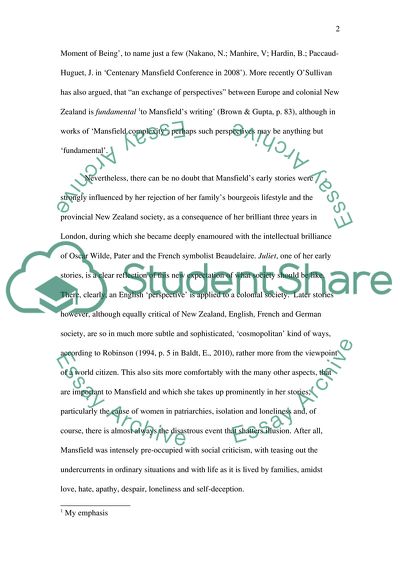Cite this document
(Katherine Mansfield and Cosmopolitanis Assignment, n.d.)
Katherine Mansfield and Cosmopolitanis Assignment. Retrieved from https://studentshare.org/literature/1744515-vincent-osullivan-argues-that-an-exchange-of-perspectives-between-europe-and-colonial-new-zealand-is-fundamental-to-mansfields-writing-in-brown-and-gupta-2005-p83
Katherine Mansfield and Cosmopolitanis Assignment. Retrieved from https://studentshare.org/literature/1744515-vincent-osullivan-argues-that-an-exchange-of-perspectives-between-europe-and-colonial-new-zealand-is-fundamental-to-mansfields-writing-in-brown-and-gupta-2005-p83
(Katherine Mansfield and Cosmopolitanis Assignment)
Katherine Mansfield and Cosmopolitanis Assignment. https://studentshare.org/literature/1744515-vincent-osullivan-argues-that-an-exchange-of-perspectives-between-europe-and-colonial-new-zealand-is-fundamental-to-mansfields-writing-in-brown-and-gupta-2005-p83.
Katherine Mansfield and Cosmopolitanis Assignment. https://studentshare.org/literature/1744515-vincent-osullivan-argues-that-an-exchange-of-perspectives-between-europe-and-colonial-new-zealand-is-fundamental-to-mansfields-writing-in-brown-and-gupta-2005-p83.
“Katherine Mansfield and Cosmopolitanis Assignment”, n.d. https://studentshare.org/literature/1744515-vincent-osullivan-argues-that-an-exchange-of-perspectives-between-europe-and-colonial-new-zealand-is-fundamental-to-mansfields-writing-in-brown-and-gupta-2005-p83.


